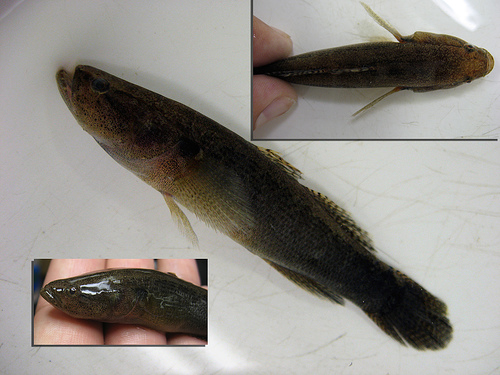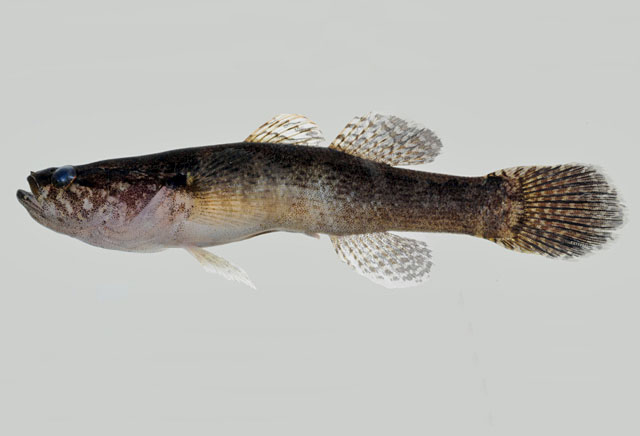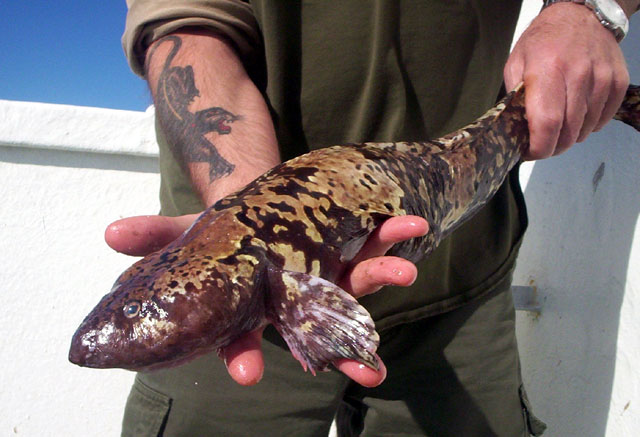
Eleotris amblyopsis
FAMILY
Eleotridae
TAXONOMY
Culius amblyopsis Cope, 1871, Suriname.
OTHER COMMON NAMES
English: Sleeper.
PHYSICAL CHARACTERISTICS
Reaches about 3.9 in (10 cm) total length over most of range,
largest individual observed from North America about 5.5 in
(14 cm). Two dorsal fins, pelvic fins separated, and rounded
caudal fin. Torpedo-like body shape with flattened head. Tan
to dark brown, sometimes changes to dark trunk laterally with
light tan dorsum, especially in juveniles. May have rows of
small dark spots on sides. Two dark streaks radiating rearward
from eyes on cheeks. A large dark spot on the upper pectoral
fin base and some specimens with two elongate spots extending
from pectoral fin base onto pectoral fin rays. Stout spine on
lower cheek faces forward.
DISTRIBUTION
Common from North Carolina to French Guiana, and in Cuba
and Hispaniola. Less frequently known from Brazil and the
Antilles.
HABITAT
Euryhaline (able to live in waters of a wide range of salinities);
adults and juveniles inhabit continental estuaries, but are also
known from fresh water in Central America and occasionally in
the Antilles. Associates with floating, emergent, and marginal
vegetation, such as mangroves, river cane, and water hyacinths.
Pelagic marine larval stage.
BEHAVIOR
A lethargic “sit-and-wait” predator. Postlarvae join other
species to form large schools which periodically move into estuaries
and fresh waters after a marine larval period.
FEEDING ECOLOGY AND DIET
Predaceous; feeds on shrimps and small fishes.
REPRODUCTIVE BIOLOGY
Presumably amphidromous, with adults living and reproducing
in fresh water or estuaries and a marine larval period.
CONSERVATION STATUS
Considered vulnerable in North Carolina at the edge of its
range, but not listed by the IUCN.
SIGNIFICANCE TO HUMANS
None known.
Other popular Animals
Photo Gallery of - Large-scale spinycheek sleeper





 Animalia Life
Animalia Life